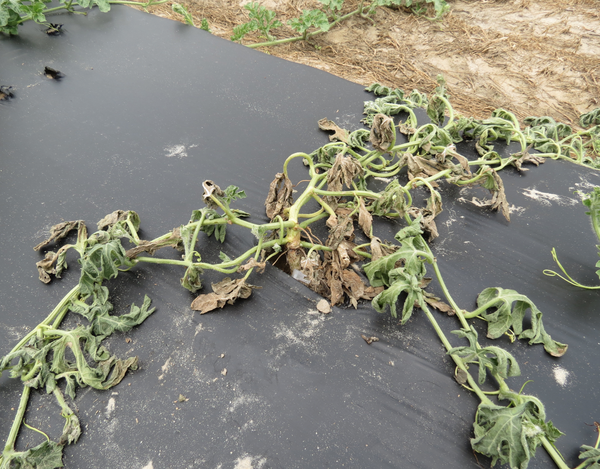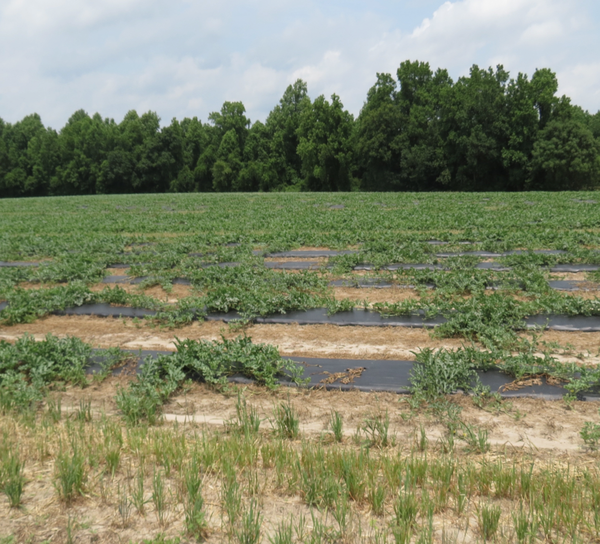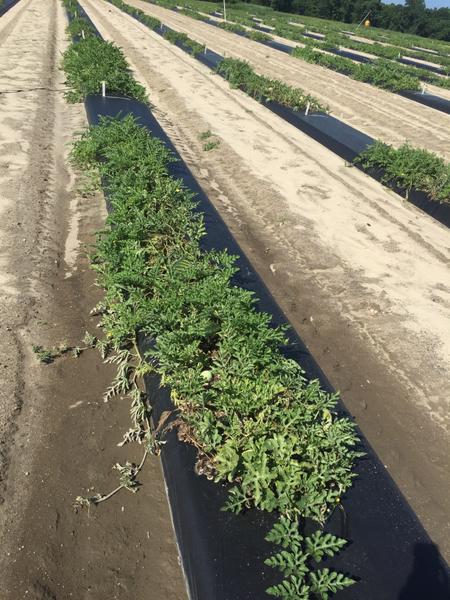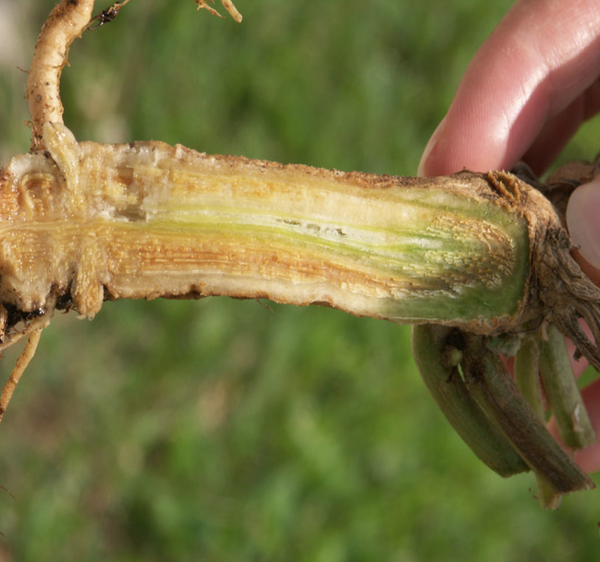Fusarium oxysporum, f. sp. niveum
Fusarium wilt causes wilting of the above ground tissue and general vine decline in watermelon. Typically, one side of the plant will exhibit more severe symptoms than the other, which is known as unilateral wilting. The fungus colonizes the vascular system causing discoloration that is visible if stems are cut open longitudinally. Fusarium wilt typically occurs in patches in the field. Infection occurs in the Spring when temperatures are cooler, but symptoms are seen in the summer when higher temperatures favor the wilt symptoms. For more information about Fusarium wilt on watermelon, visit the Watermelon Breeding page.
Factsheets
- Fusarium wilt of Watermelon – NC State Extension
- Marchitez de Fusarium en sandía – NC State Extension
- Fusarium wilt of Watermelon – University of California
Plant Disease Management Reports
- Evaluation of triploid watermelon cultivars with resistance to Fusarium wilt race 1 in a field infested with races 1 and 2 of Fusarium oxysporum f. sp. niveum, 2021. PDMR 16: V075.
- Evaluation of fungicides for control of Fusarium wilt on watermelon, Clayton 2018. PDMR 13: V056.
- Evaluation of programs combining host resistance with fungicides for control of Fusarium wilt of watermelon, Clayton 2018. PDMR 13: V076.
- Evaluation of programs combining host resistance with fungicides for control of Fusarium wilt of watermelon in Clayton, North Carolina, May 2017. PDMR 13: V149.
- Evaluation of programs combining host resistance with fungicides for control of Fusarium wilt of watermelon in Clayton, North Carolina, July 2017. PDMR 13: V150.
More information about Fusarium wilt
- Cucurbit Crop and Disease News
- Fusarium wilt posts
- A Diagnostic Guide for Fusarium Wilt of Watermelon – Plant management network
- Fusarium wilt of watermelon – University of Florida IFAS Extension

Figure 1. Wilting of the aboveground tissue. All leaves are wilted or necrotic. Image provided by Nathan Miller, NCSU Vegetable Pathology Lab.

Figure 3. Fusarium wilt is a patchy disease and healthy plants can be found in between diseased plants.

Figure 4. Unilateral wilting of single, green vines due to Fusarium wilt. Dr. Lina Quesada, NCSU Vegetable Pathology Lab

